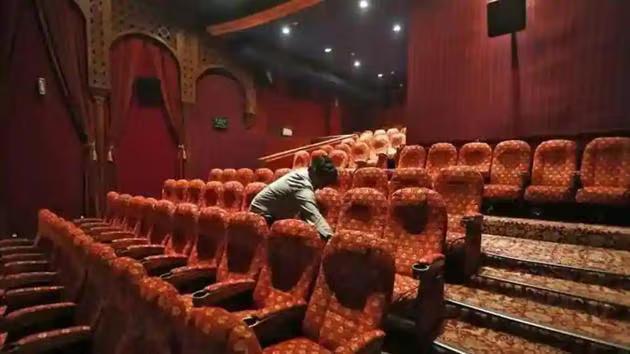
Movie Theatres are Never Coming Back: Netflix Co-CEO Ted Sarandos
The COVID-19 pandemic had a significant impact on the entertainment industry, forcing movie theatres to shut down or operate at reduced capacity. While some cinemas have managed to recover, Netflix’s Co-CEO Ted Sarandos has made a bold prediction about the future of movie theatres. According to Sarandos, movie theatres are never coming back. In a recent interview, he stated that the trend is not reversing, and the decline of box office revenue is a clear indication that movie theatres are on their way out.
Sarandos’ comments come as no surprise, given the rapid growth of streaming services like Netflix. The rise of online entertainment has changed the way people consume movies, making it easier and more convenient to watch films from the comfort of their own homes. With the ability to access a vast library of content at any time, many viewers have abandoned the traditional cinema experience.
The statistics back up Sarandos’ claims. According to a report by the Motion Picture Association of America, global box office revenue was 40-50% below pre-pandemic levels in 2022. This decline is not limited to a single year, as Sarandos noted that box office revenue saw an 8% further decline this year. These numbers are a clear indication that the movie theatre industry is struggling to recover.
So, what’s driving this decline? Sarandos attributes it to the shift in consumer behavior. In a world where people are increasingly looking for convenience and flexibility, movie theatres are struggling to adapt. The traditional cinema experience, which involves leaving the house, paying for parking, and sitting in a crowded theatre, is no longer appealing to many viewers.
In contrast, streaming services like Netflix offer a seamless and personalized experience. Viewers can watch their favorite movies and TV shows on their own schedule, without the hassle of leaving the house. This convenience has led to a significant decline in movie theatre attendance, as people opt for the comfort and flexibility of streaming.
Another factor contributing to the decline of movie theatres is the rise of alternative entertainment options. With the resurgence of live events, such as sporting events and concerts, people have more options for entertainment than ever before. Sarandos noted that these events, which were severely impacted by the pandemic, are now back and bigger than ever. This shift in consumer behavior has further eroded the appeal of movie theatres.
It’s not all doom and gloom for movie theatres, however. While the traditional cinema experience may be declining, there are still opportunities for theatres to innovate and adapt. For example, some cinemas have started to offer premium experiences, such as luxury seating and gourmet food and drink options. These upgrades can help to attract a new generation of viewers who are willing to pay more for a unique and memorable experience.
Additionally, some movie theatres are embracing the trend of streaming by offering their own streaming services. For example, AMC Theatres has launched a streaming service called AMC Premier, which offers a range of movies and TV shows for a flat monthly fee. This move acknowledges the shift in consumer behavior and offers a way for movie theatres to remain relevant in a changing market.
In conclusion, while movie theatres may never come back in the same way as they once were, there are still opportunities for innovation and adaptation. By embracing the trend of streaming and offering premium experiences, movie theatres can continue to thrive in a changing market. As Sarandos noted, the trend is not reversing, and it’s up to movie theatres to find new ways to stay relevant.






